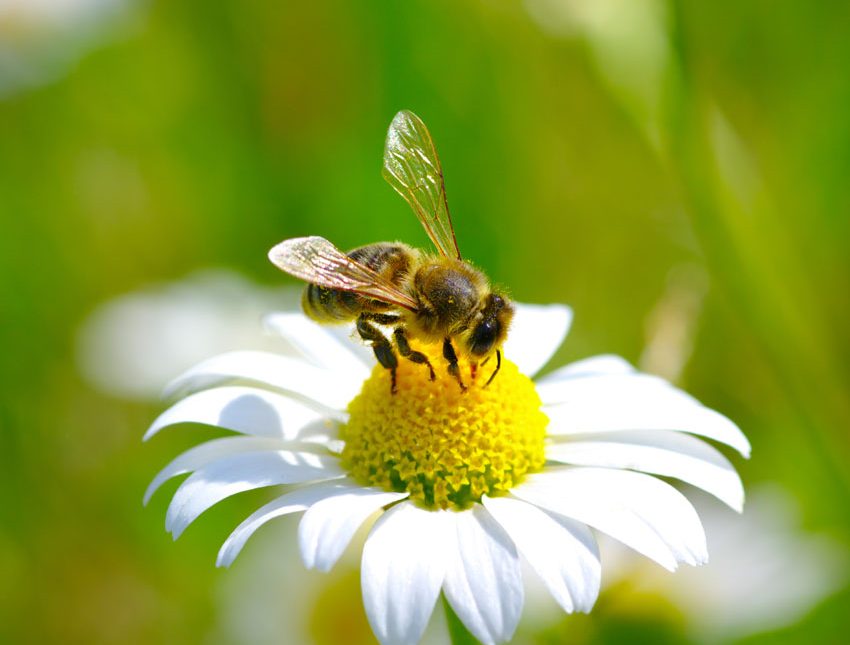Pollinators’ Plight: NWTF Facility Reveals Impact of Ozone on Bee Behaviour

Experiments at the National Wind Tunnel Facility’s EnFlo wind tunnel at the University of Surrey, have precisely measured how ozone pollution degrades floral scents and the significant impact this has on bees’ ability to navigate to flowers.
The intricate dance between flowering plants and their pollinators is vital for ecosystems and agriculture, often guided by delicate scent trails released by flowers. These scents, composed of volatile organic compounds (VOCs), act as beacons, guiding bees and other insects to sources of nectar and pollen. However, these crucial chemical messages are under threat from atmospheric pollution, particularly ground-level ozone, a pollutant formed when sunlight reacts with emissions from vehicles and industry. Research led by Professor Alan Robins and Dr Paul Hayden at the University of Surrey, in collaboration with the University of Reading, the UK Centre for Ecology & Hydrology (UKCEH) in Edinburgh, and Rothamsted Research, sought to understand precisely how ozone pollution affects these scent plumes and the insects that rely on them. This work was part of the NERC-funded DOMINO project.
The challenge: Scrambled signals in polluted skies
Floral scents are complex blends of VOCs, chemicals that can react with atmospheric oxidants like ozone. When ozone reacts with a scent compound, it chemically changes it, potentially rendering it unrecognisable to a pollinator or simply destroying the signal. While this basic interaction is known, how it unfolds in the real world – within the turbulent, ever-changing conditions of the lower atmosphere – was poorly understood.
Air near the ground exists within the atmospheric boundary layer, a region constantly mixed by wind interacting with the surface. This turbulence means that pollutants like ozone and floral scents don’t mix instantly or evenly. Instead, they form fluctuating, patchy plumes where concentrations can vary dramatically from one moment to the next. Understanding how ozone degrades scents within these complex, dynamic plumes, at scales relevant to a flying insect, required highly controlled experimental conditions.
NWTF’s contribution: Simulating scent trails at EnFlo
To investigate these interactions under realistic conditions, the research team utilised the EnFlo wind tunnel at the University of Surrey, a key part of the National Wind Tunnel Facility (NWTF) network. EnFlo’s specific design for simulating low-speed environmental air flows, like those found in the atmospheric boundary layer, coupled with its large 20-metre long working section, made it the ideal environment to precisely track how ozone altered delicate floral scent plumes over distances relevant to pollinators.
Inside the tunnel, researchers recreated a realistic, scaled atmospheric boundary layer flow (with a wind speed of 0.7 m/s) and released a controlled blend of representative floral VOCs (including α-terpinene, β-caryophyllene, and α-humulene). They then introduced controlled background levels of ozone, at concentrations of 50 parts per billion (ppb) and then 150 ppb. Due to the health considerations of working with ozone, extensive use was made of EnFlo’s capability for remote, unmanned operation. Sophisticated instruments, including a PTR-QITOF mass spectrometer, measured the VOC concentrations at various points downwind, mapping the plume’s chemical evolution over a roughly 20-second ‘flight time’ through the tunnel.

Key Findings: How ozone disrupts the message
The wind tunnel experiments provided unprecedented detail on the ozone-VOC interaction. Overall, measurements clearly showed the scent plume shrinking and concentrations of key VOCs decreasing significantly as ozone levels increased. However, while ozone clearly degraded the VOCs, the process wasn’t simple. Due to incomplete mixing, the effective reaction rate was initially slower near the source than simple models predict, but significantly faster at the plume edges where ozone and VOCs mixed most readily.
Beyond just degrading the scent, ozone also increased the ‘patchiness’ (intermittency) of the plume and decreased the width of the scent filaments within it. These structural characteristics are known to be crucial cues used by insects navigating towards a source.
As part of the research, honeybees were trained to recognise the original four-VOC scent blend. When tested with samples simulating the plume’s scent after exposure to ozone in the tunnel, their recognition dropped dramatically. At 6 metres downwind, 52% recognised the scent from the relatively intact plume centre, but only 32% recognised the more degraded scent from the plume edge. At 12 metres, recognition fell further to 38% (at the centre) and a mere 10% (at the edge).
Conclusion: Unmasking an invisible threat
This research demonstrates unequivocally that ozone pollution, even at levels commonly found in the environment, can chemically alter floral scents and disrupt the structural cues within odour plumes. This significantly impairs the ability of pollinators like honeybees to follow these trails, potentially impacting plant reproduction and ecosystem health. The findings also suggest likely impacts on other critical odour-mediated behaviours, such as mate finding.
The detailed mapping of these effects was only possible through the large-scale, controlled environment and sophisticated instrumentation provided by NWTF’s EnFlo facility. By allowing researchers to simulate and measure these complex interactions with high fidelity, NWTF infrastructure plays a vital role in understanding and addressing the subtle but significant ways air pollution impacts the natural world.


